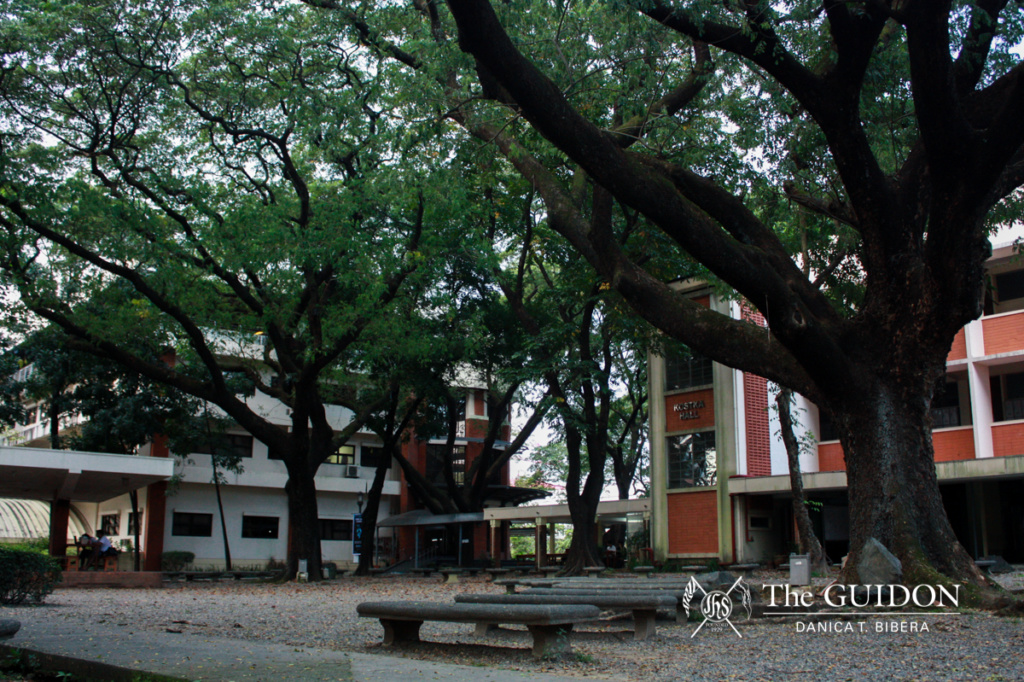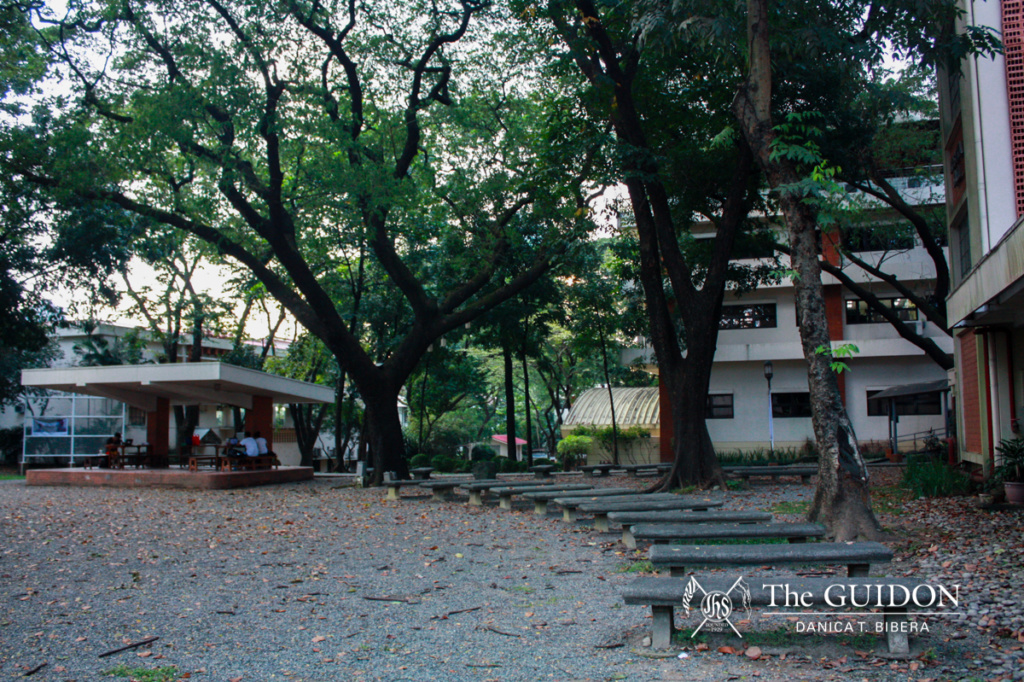The semester has just picked up its pace and it doesn’t seem to be showing any signs of slowing down. As college students who are caught in between lectures and deadlines, stopping to focus on things like the sounds of cars along Katipunan, a leaf falling in Zen Garden, or our own breaths have almost zero chances of making it on our to-do lists.
It is giving attention to these everyday things, however, that might just make listening to lectures and meeting deadlines that much easier.

Coming home to the present
As we go through our day-to-day lives, we push these seemingly mundane things away from our attention and operate on autopilot. Philosophy instructor and yoga teacher Eileen Tupaz describes this as “to do things habitually and reflexively based on patterns learned from the past, without really noticing what we’re doing or what’s going on.” She recognizes that this allows us to use our cognitive resources more efficiently, but warns of the consequences of taking this to an extreme. “We lose touch with ourselves [and] get cut off from our feelings, with other people [when] we don’t really pay attention in our interactions, and with the world [when] we don’t notice our surroundings,” she says. Tupaz calls this being mindless, a state we default to when we don’t train in meditation and mindfulness.
This all sounds undesirable, so why do we do it? Psychology instructor Angelique Villlasanta observes that students use the freed up attention from not thinking of the present moment to instead repeatedly think of the past and future. We’re always anxiously anticipating our next task or beating ourselves up over past failures.
Tupaz describes meditation as “a mental discipline found in different belief systems and cultures that involve regulating one’s attention in order to achieve a quiet and restful yet highly alert level of consciousness.” It looks like a handful, but it’s actually pretty simple. Villasanta uses the phrase “coming home to the present” to describe any meditative activity. The present is the only place we can really be in, yet we somehow find ways to flee from it. Meditation takes us from the the state of being mindless to being mindful. Instead of operating on autopilot, we begin to pay attention to the present.
When people think of meditation, they think of “monks, [that] you have to be in a quiet place, [that] you have to do it for long periods of time” when in fact, “It could be as simple as eating a piece of marshmallow, or just walking, or, like, yoga, or just listening to a friend,” Villasanta explains. This common misconception is perhaps the biggest reason that meditation isn’t a go-to activity for busy college students, a population that quite frankly needs the activity’s benefits. It’s often thought of as a highly specialized, complex, and time-consuming task, but such is not the case. Any activity, with training, can become meditative.
Unlimited benefits
The benefits of meditation have been proven scientifically time and again. “Studies by neuroscientists show that regular meditation changes both brain chemistry, and structure,” Paolo Vergara of Zen Center Philippines shares. “Parts of the brain process the chemicals that deal with anger and fear, relaxation, and even empathy. Aside from reshaping these centers, meditation creates more neural connections, aiding faster memory recall and emotional processing,” he adds. Tupaz also points that meditation aids in creativity, problem-solving, and performance under pressure.
Tupaz adds that, aside from developing self-esteem and self-acceptance, meditation also alleviates emotional stresses such as depression, fear, stress, and worry, while cultivating qualities such as compassion, optimism, and positivity.
Given that the mind affects the body, meditation also has physical effects. “It boosts the immune system and improves energy levels,” notes Tupaz. Other physical benefits include reduced inflammation and pain, reduced digestive and respiratory issues, and increased longevity.

From concepts to practice
“In a nutshell, meditation is a practice of focusing the mind… but it’s just a concept until that point. Meditation is a practice, much like mastering a musical instrument, painting, or regularly training and conditioning for any sport,” says Vergara.
To begin meditating, a popular practice is simply closing one’s eyes and focusing on one’s breath. It doesn’t have to be about controlling the breath, but simply paying attention to it. Other things to bring one’s attention to might be a visualization of one’s goals, a mantra, or an idea one wants to embody. Many websites and apps provide guides for this. For first-time meditators, Vergara suggests setting aside a space in which one cannot be distracted and stresses the importance of proper posture. “But really, that’s just icing. The cake is to devote time to daily practice,” he explains. Vergara advises starting with five minutes a day, keeping that up, and slowly moving to six, seven, so on and so forth.
To cultivate mindfulness Vergara forwards what he learned from his teachers. “Choose one activity you normally take for granted, like turning the keys, twisting the faucet, or opening a wrapper. Try to focus on the act as a whole. Feel the texture, hear the crunching, look at the twisting.”
While the internet is a rich resource for meditation guides, Tupaz says that “nothing quite beats attending an actual meditation class.” Beginning to practice with other people in a class might be a good idea for new meditators. “If it’s a class type… you learn from others, you feel like it’s a shared journey,” Villasanta explains.
Meditating in and out of campus
The Ateneo is great place to start meditating. Villasanta notes that the benches around campus, particularly those in the garden between the Social Sciences building and Dela Costa, and those in between Dela Costa and Faura, are also good places to sit down and meditate, perhaps by observing the surrounding trees. She also mentions University Interventions, an upcoming effort of the Bulatao Center (the center of the Ateneo’s Psychology Department) that offers mindfulness classes to students in campus.
Vergara challenges students to try meditating “while the bell rings and everyone is rushing from class to class.” The thing is, he adds, “it’s places where there’s more chaos where meditation thrives best.”
In the hectic environments we find ourselves in, meditation and mindfulness could be the sanctuary we so crave. Meditation and mindfulness may appear daunting, and maybe even pointless at first, but as Tupaz, Villasanta, and Vergara illustrate, they help make the most out of every day. For people who have never attempted meditation, give it a shot. There are countless opportunities to do so, and we can all use five minutes of quiet in our days.
Who knows? It might change your life.